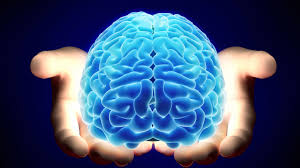week 3 Robotics + Art
I was really excited to see that we were talking about robots today. Robots are all around us and in everything we do. Robots make our life easier but when they were first created they made some people’s lives more stressful. Machines and robots have started to take over in a sense. They have taken people's job away but they can work so much faster and require no training. They a programmed with very specific and detailed code they tell them how to complete many tasks in a timely manner. I found it interesting that in lecture Professor Vesna mentioned that the name robot came from the work robota meaning “work”.
 |
| ABB robot production line |
In Walter Benjamin’s 1939 essay, he talks about the reproduction of art work and how machines have ruined the “aura” of art. He states that due to mechanical reproduction art work lacks, “its presence in time and space, its unique existence at the place where it happens to be.” Douglas Davis states in his essay that "This means that any video, auto, or photographic work of art can be endlessly reproduced without degradation." I agree today almost everything can be done on the internet. A letter can be made to look like they are hand written when they are really not. Photos can be photoshopped to make a completely new image.
Art and technology/robotics have both positively influenced each other. For examples, if we look at the things we use every day from our phones to cars. Our phones were once huge and not pretty. Now they are small and sleek. The pictures on phones are phenomenal. It feels like you are there when you see it. Cars are now designed to be eye-catching so people are more likely to buy them. They are fast and packed with new technology. Recently we have seen the new camera to help you back up or the self-parking car.
References
Benjamin, Walter. "The Work of Art in the Age of Mechanical Reproduction." Stardom and Celebrity: A Reader (n.d.): 25-33. Web.
Davis, Douglas. "The Work of Art in the Age of Digital Reproduction (An Evolving Thesis: 1991-1995)." Leonardo 28.5 (1995): 381. Web.
Vesna, Victoria . "Robotics Art." DESMA9. UCLA, Los Angeles. 23 Apr. 2017. Lecture.
ABB robots. 2011. ABB China. Web. 23 Apr. 2017. <https://www02.abb.com/global/CNABB/CNABB050.NSF!OpenDatabase&db=/global/cnabb/cnabb054.nsf&v=BF6&e=us&url=/global/seitp/seitp202.nsf/0/F528FEA6D4D93DB5482579130028C06B!OpenDocument>.
M, E. R. ANS-Nice car. N.d. Web. 23 Apr. 2017. <https://www.flickr.com/photos/116883504@N07/15925893560>.




Hi! I liked your blog post a lot. I agree with you that art has greatly impacted the evolution of our technologies and notably helped evolve and simplify our daily lives. I think a good example of the sleek car you were talking about is the Tesla. It is sleek and small which contributes to its' efficiency and speed while it is also packed with the latest most advanced computer technology.
ReplyDeleteI think you brought up a very interesting point that robots take jobs away from people but also are much more efficient. This, in turn, improves the quality of lives of others. I imagine that there is a type of cost-benefit analysis to determine whether the productivity of the robots offsets the lack of jobs. I would presume that robots are overall better. Since many products made today are from machines, it goes along with the notion that few items now have authenticity. It leads to me wonder if we are sacrificing the integrity of an item in order to have it in mass quantities.
ReplyDelete